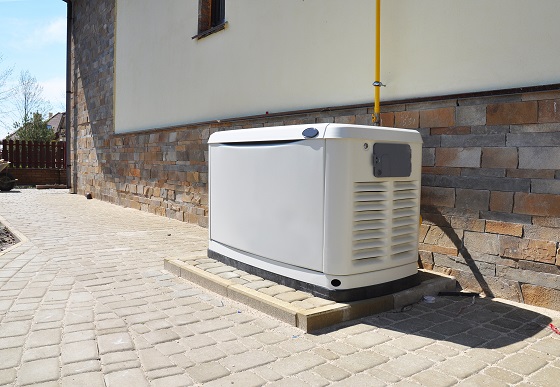 If you were asked what the most-common disaster in your home would be during the Winter months if you lived in a cold-weather state, what would your answer be?
If you were asked what the most-common disaster in your home would be during the Winter months if you lived in a cold-weather state, what would your answer be?
Probably, you’d say damage from ice or snow, such as a roof collapsing from the weight of the countless snowfalls. or gutters being ripped off the sides of the home from the weight of the accumulated debris which has frozen solid and weighed them down.
Those answers are good, but to have guessed correctly, you would have stated that water damage in the basement due to frozen pipes was the disaster that occurs most frequently and does the most damage. If a pipe freezes and cracks even one-eighth of an inch, it can leak up to 250 gallons of water a day. So, it is no surprise that water damage claims are the second most-frequently filed insurance claim in the United States (after hail damage). Approximately 40% of homeowners will experience water damage at some time while owning their home.
The good news is that 93% of water damage in the home can be prevented.
Winter water damage
Burst pipes are a big problem in Winter, but there are other causes for Winter water damage, including, as mentioned above, not cleaning debris from gutters, which will cause the gutters to overflow, and permitting water to pool at the base or perimeter of your home. Slowly thereafter, water will seep through the foundation into your basement.
Additionally ice dams can form if debris backs up and the water will drain into your home’s attic.
Speaking of attics, your attic’s temperature should be properly regulated to restrict snow melt on the roof. If the attic is too warm and too much heat escapes through the attic, it can cause snow or ice to melt and pool on the roof. The ideal temperature in the attic should be 5-10 degrees warmer than the outside temperature. Insulation in your attic will help to regulate the temperature better and eliminate the risk of snow melt and the resulting freeze/thaw cycle that will cause additional snow and ice to pile-up guaranteeing that ice dams will plague you throughout the season, along with the threat of a collapsed roof.
It is imperative that you shut off your outside water and leave the tap open before a hard freeze to reduce internal pressure and keep the water from freezing in the line.
To keep your inside pipes warm and thwart freezing, you can insulate the exposed pipes with foam sleeves. Well-insulated basements, crawl spaces and attached garages also serve to keep the pipes warm and prevent freezing.
When the weather is below zero, or the temps hover above zero but the wind-chill is dangerously low, you should take precautions to keep your pipes from bursting due to ice in the line. An easy trick to do when the outside temperatures drop, is just running hot water through the pipes several times a day, or leaving a small trickle or drip which will ensure that warm water is coursing through the pipes and the pipes will not freeze. This is an excellent time to do hot-water laundry and accomplish two tasks at once! You should take this precaution every time the weather is very frigid.
For indoor pipes that are inside a cupboard or vanity, like in the kitchen or bathroom, respectively, it is a good idea to leave the door ajar or to completely open it to allow the warm air circulating in your home to enter the cupboard and warm the pipes.
By keeping your thermostat set to at least 65 degrees (even if you are away during the day, or longer), will ensure that the house temperature, and therefore the temperature of your inside walls, will be warm enough to keep the pipes inside the walls from freezing.
Burst pipes
Everyone knows that even a little bit of water in the basement can quickly spread and overtake the basement in no time. Even a ruptured hot water tank, will send water here, there and everywhere and hopefully your drains are sufficiently clear and the water will flow down the slight slope and go down the drain. But… not before it wreaks havoc everywhere it goes. Especially if it infiltrates any electronics, or your furnace or washer and dryer.
In a water disaster, you’ll immediately think of the damage you’ll incur – both money wise for discarded furniture or personal items, then replacement value, and, of course – your time and effort to clean up the mess. Sadly, some items will not be replaceable. But, what you might not think of it readily, as you stand shaking your head in disbelief while water is well over your ankles, is the long-lasting and even toxic damage from the water episode… that would be black mold.
If your pipes burst, you need to take immediate action so that you contain the water and dry the area completely so that mold does not start forming in your basement and/or crawl spaces. The perfect environment for mold will be the newfound moisture in your home and while you try to dry up the area with fans and cranking up the furnace as high as you can stand it, that moisture and ultra-heat combo creates the perfect environment for mold to thrive and spread – heat and moisture.
If mold damage occurs despite your best efforts, before it spreads and causes extensive damage to your home and your health as well, arrange as soon as possible for a consultation with a mold inspector. That person will conduct a thorough mold inspection of your home and recommend mold remediation action to be taken as quickly as possible. Your home will be like new, with the mold gone and the odor neutralization in place. Contact a mold inspector.




